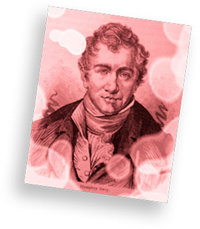Read: Inhalants: A Short History
INHALANTS: A SHORT HISTORY
The inhaling of fumes from chemicals such as incense, oils, resins, spices and perfumes to alter consciousness, or as part of religious ceremonies, dates back to ancient times in Egypt, Babylonia (present-day Iraq), India and China.
According to some researchers, inhaling gas vapors to alter one’s state of consciousness was practiced by priestesses at the Oracle of Delphi1 in ancient Greece.
In the early 1800s, nitrous oxide, ether and chloroform were the anesthetics used commonly as intoxicants.
Nitrous oxide was regarded as a cheap substitute for alcohol and was popularized by the British scientist Sir Humphry Davy. He held nitrous oxide parties and coined the word “laughing gas” in 1799. Noting the anesthetic effects, Davy proposed that the gas could be used for operations, although this was not tried for another half century.
The use of anesthetics for recreational purposes continued throughout the nineteenth century in Europe and the US.
Ether was used as a recreational drug during the 1920s Prohibition era, when alcohol was made illegal in the US.
In the 1940s, recreational use of solvents, primarily gasoline, became popular.
Abuse of inhalants in the United States increased in the 1950s and is now widespread among adolescents.
By the 1960s, the practice of solvent sniffing had spread across a wide variety of commercial products including paint and lacquer thinners, nail polish remover, shoe polish, lighter fluid, spray paint and others.
In more recent years, glue and gas sniffing has become a widespread problem among homeless street children in South Asia, Mexico, Eastern Europe, Kenya and other areas around the world. Street kids use these inhalants to numb the pain of hunger, cold and desperation.
Gas and spray paint sniffing is also common in remote regions in Canada, America, Australia, New Zealand and some Pacific Islands.
- 1. The Greeks believed that the god Apollo spoke to priestesses through the Oracle of Delphi, an ancient shrine.




